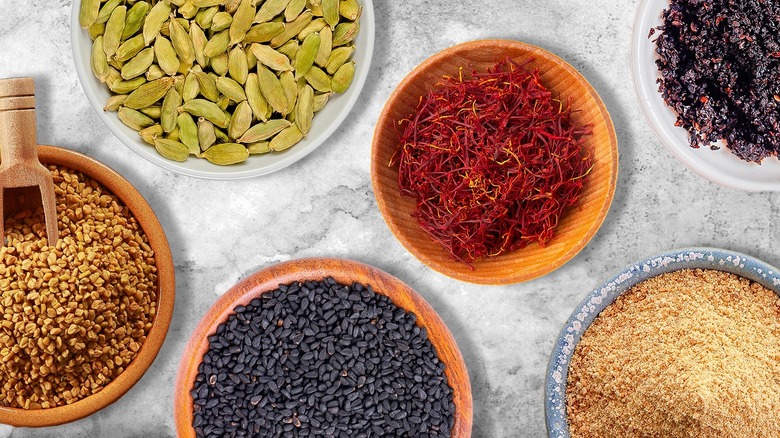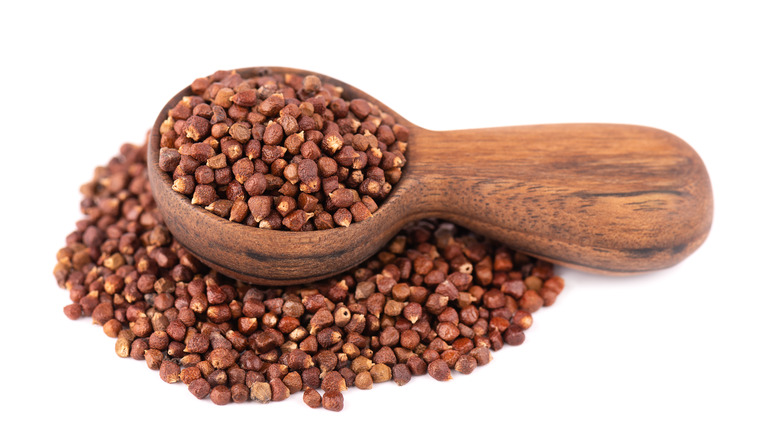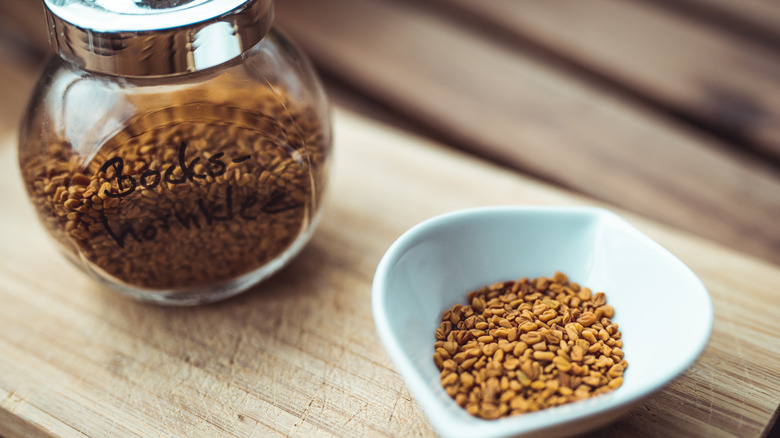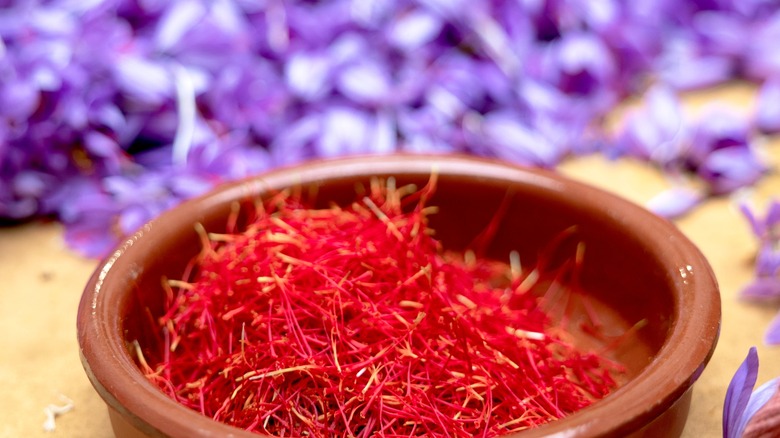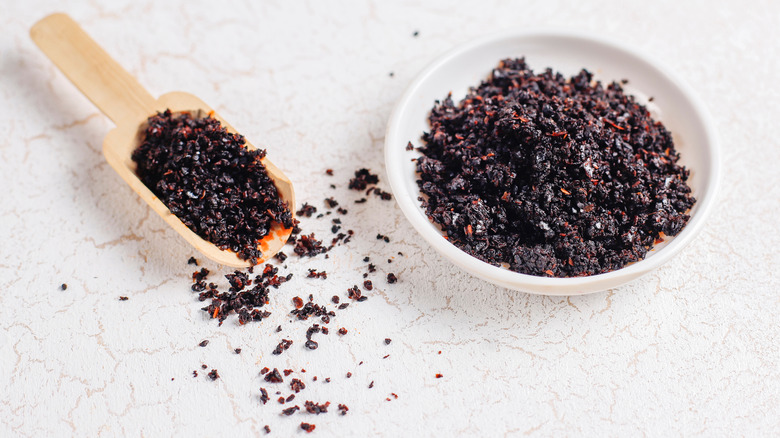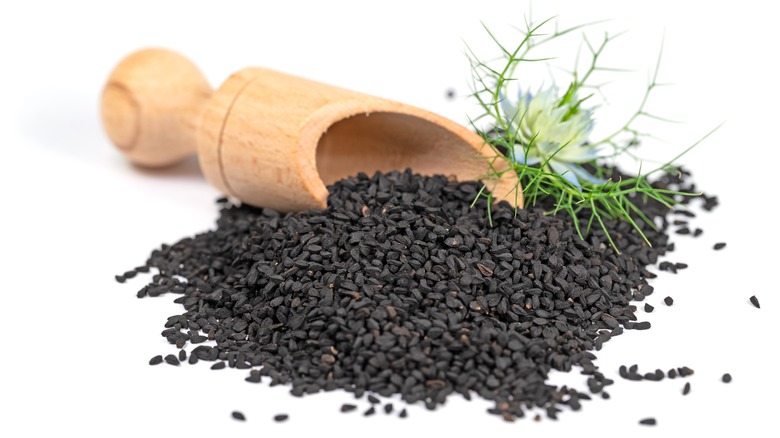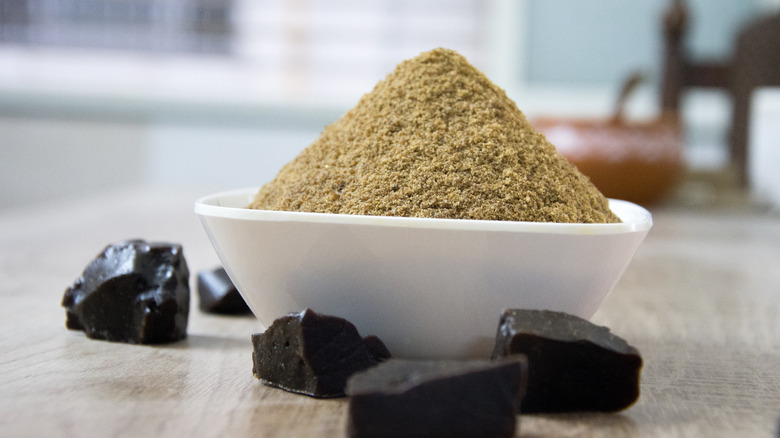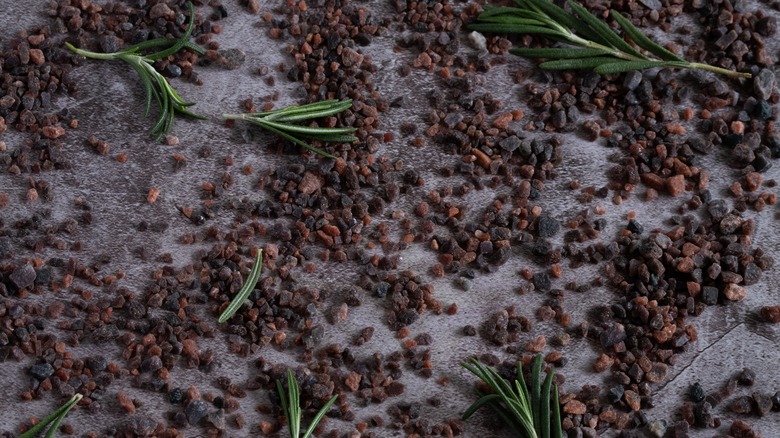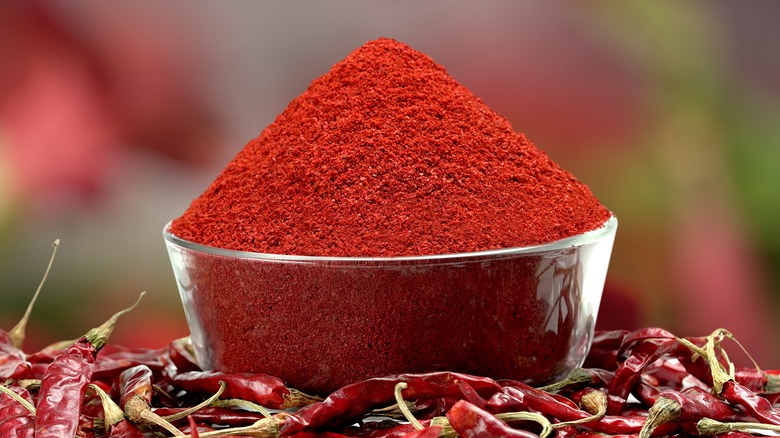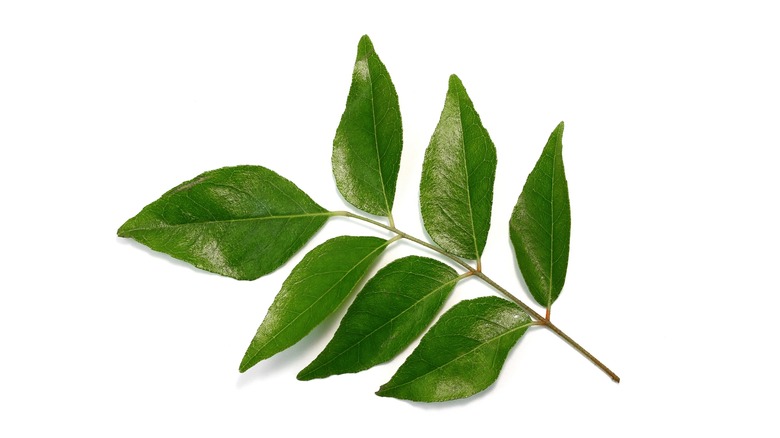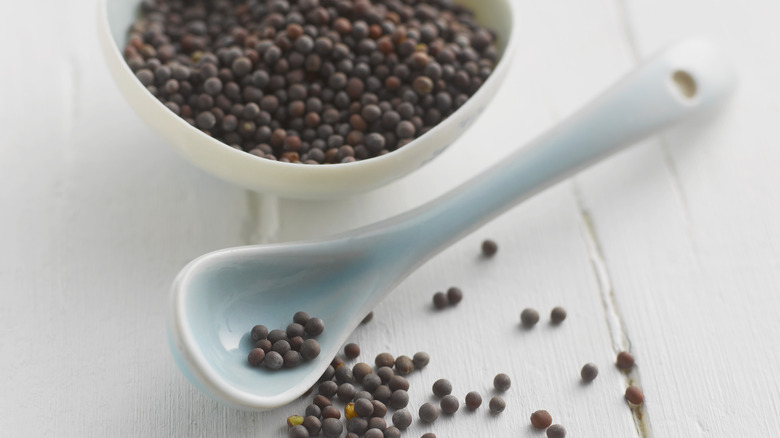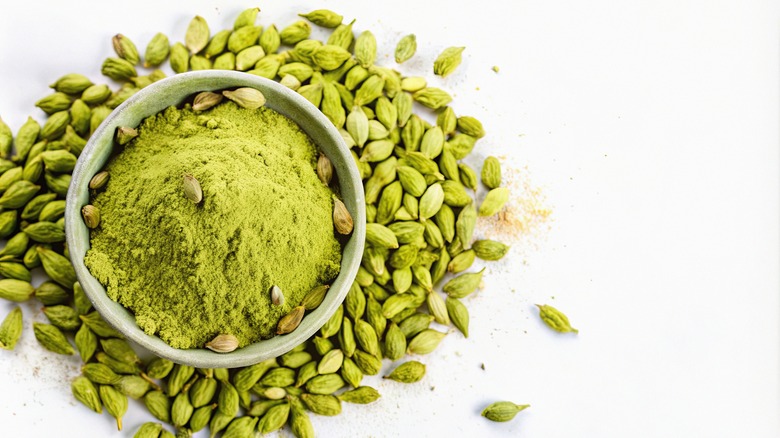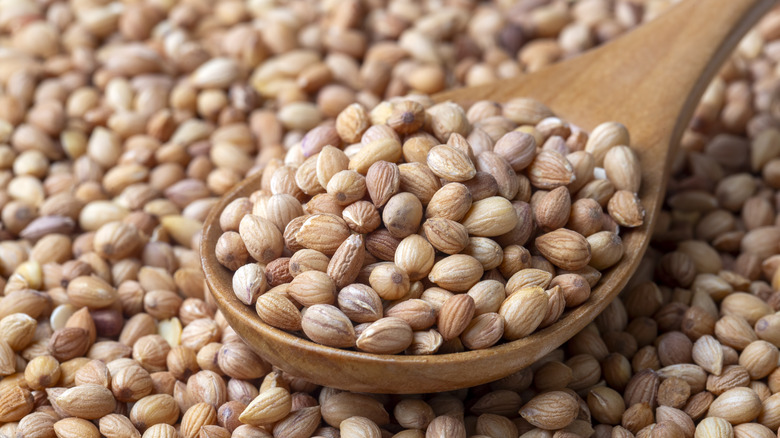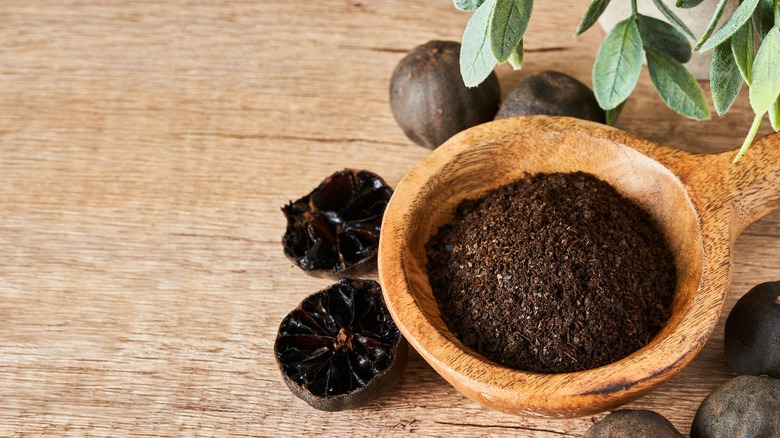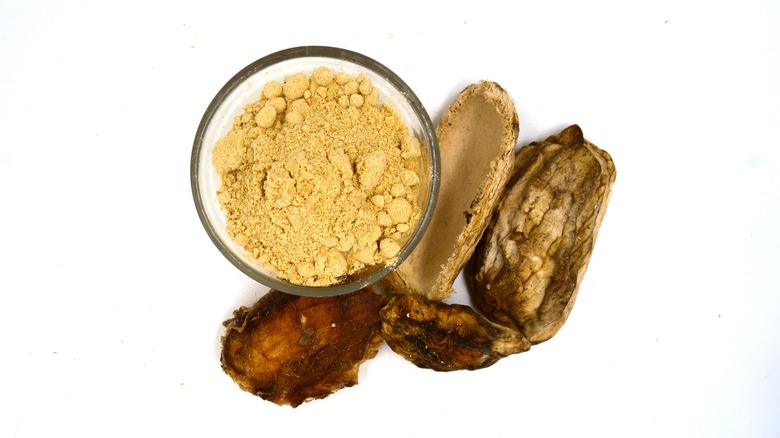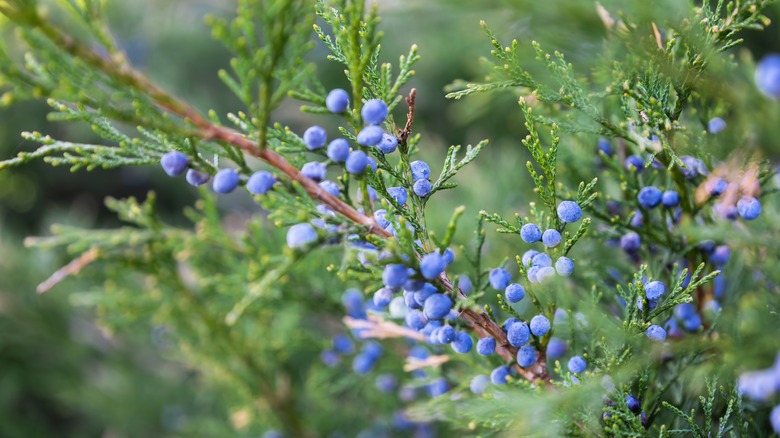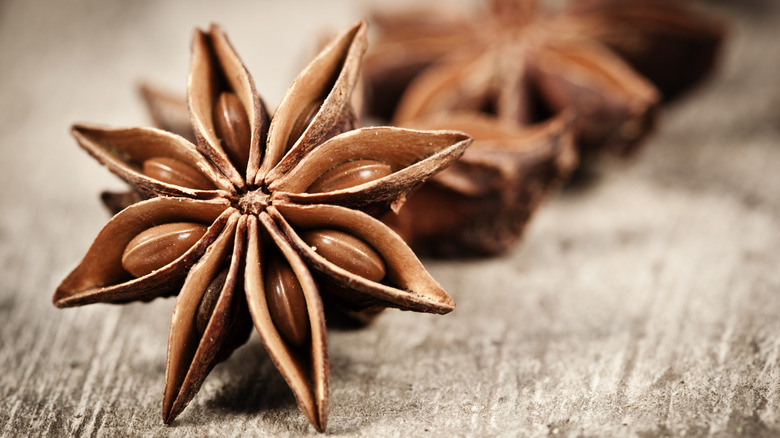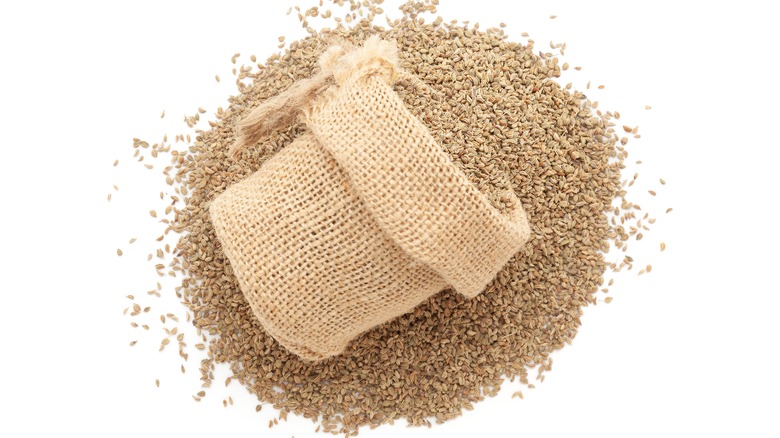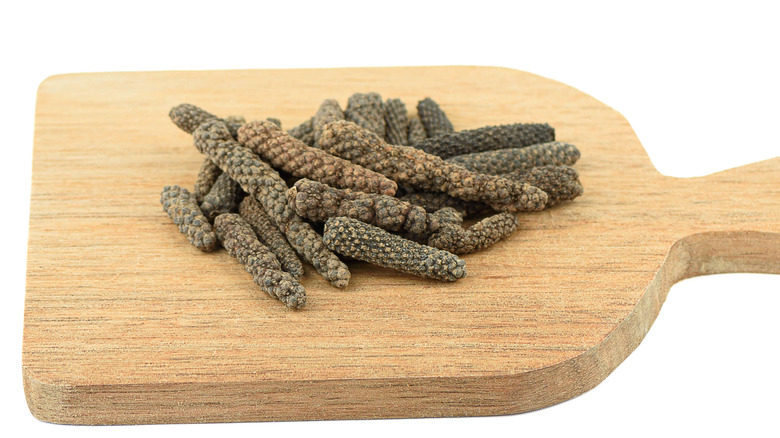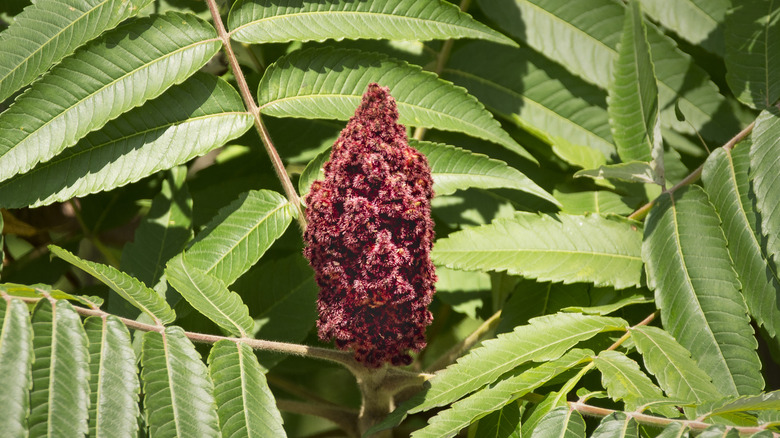19 Uncommon Spices You Should Start Cooking With
Many home chefs are frustrated when they can't get a recipe to taste like it did on that amazing international adventure or at their favorite ethnic food restaurant downtown. Too many dishes have subtle flavors that simply don't add up to the untrained palate, and the results at home are flat and disappointing.
Luckily, there is an easy fix: start using the right seasonings. If you look online for traditional recipes, you'll notice they often contain uncommon spices, at least from an American point of view. However, those spices are the difference between legit cuisine and a halfhearted knockoff.
Each of the following spices adds distinct flavor, enhances heat, or otherwise levels up the dishes they go in. Because they don't have simple substitutes, cooks who don't keep them on hand often end up just skipping them altogether, and that's a mistake. They last a long time (you only have to replace spices every two to four years), so the cost is bearable if you spread it out, and your dinner guests will thank you.
1. Grains of Paradise
Anything called grains of paradise must be good, right? At least in this case, the answer is yes, says Eric Sornoso, cofounder of MealFan. He explained that this West African spice (Aframomum melegueta) brings a warm, citrus flavor reminiscent of black pepper to any dish.
"When it comes to replacing black pepper, this spice is a perfect choice because it has more depth and flavor," he says. "When freshly ground over seafood or chicken, it is superior to add a complex, slightly 'hot' dimension while not overwhelming the other ingredients' flavors."
It's perfect for crushing over roasted veggies, rubbing into grilled steak, or even adding a creative note to custard and ice cream. Given its heritage, it's especially well-suited to West African food, but also works well with the Indian culinary arts. Consider it a finishing touch for ginger rice, for instance, though you can also use it in dishes as simple as Brussels sprouts, potato hash, and tomato sauce.
2. Fenugreek
Fenugreek might sound like a funky spice, but you're probably more familiar with it than you think. "If you smell them for the first time, you'll have an 'aha!' moment, because this is the distinct flavor of North American and British curry powders," says Jennifer Pallian, dietician and recipe developer behind Foodess.
Also called methi, fenugreek (Trigonella foenum-graecum) is actually a member of the pea family. When toasted, fenugreek's small yellow-brown seeds become sweet and nutty, slightly bitter, and lightly redolent of maple. They add a distinct complexity to sauces, stews, or marinades, and homemade bread, but be warned: A little goes a long way.
"Bitter spices like this can help balance out the richness in dishes that use high-fat ingredients like ghee, cream, coconut milk, or meats," Pallian says. "Their bitterness provides a contrast that prevents the dish from becoming too cloying. I love fenugreek in lamb curry, or with potatoes in cream sauce."
3. Saffron
Saffron, the beautiful crimson threads that turn any dish golden yellow, is less uncommon than it is expensive. However, home chefs tend to ignore it vis-à-vis their home spice repertoire for cost reasons. Even the more affordable saffron options ring in around $150 per ounce, which seems like a lot. However, most recipes call for so little saffron that the price is spread quite widely, making it more affordable than you think.
Rena Awada, modern meal maven behind Healthy Fitness Meals, points out that saffron is one of the most expensive spices in the world for a reason: "This vibrant red spice comes from the delicate stigmas of the crocus flower (Crocus sativus) and has a unique flavor that's floral, slightly bitter, and earthy," she says. It has to be harvested by hand, one thread at a time. However, that hasn't stopped us from loving it. "It's used in cuisines all over the world, including Spanish paella, Italian risotto, and Persian rice dishes."
You can find saffron either as a spice (on its own) or a seasoning (which differs in that seasonings are blends of multiple spices). Saffron blends that include other spices, such as paprika, turmeric, and pepper, can make for a nice accompaniment to chicken, noodles, and rice.
4. Urfa Biber
"Ancient Turkish Biber, also called Urfa Biber, is a smoky, sweet, and raisin-tasting chili pepper," explains Eric Sornoso. "In contrast to ordinary chili flakes, it has a more subtle spiciness and notes of depth that are perfect for grilled meat, thick stew, and even chocolate mole. It can be used in a wide array of savory and sweet dishes."
Also called Urfa pepper or isot pepper, this chili is actually a cultivar of Capsicum annuum, or the traditional chili pepper. Unlike regular chilis, which you may not think of as being hydrating, it adds moisture to a dish without weighing it down because it is often packed with salt to retain its oil contents. However, that does mean you should be careful adding the pepper before you salt your dish, lest you overdo it.
5. Nigella Seeds
Ready for another seed that boosts both flavor and immunity? Nigella (Nigella sativa) is also known as black cumin, black seed, black caraway, Roman coriander, kalonji, or fennel flower. "These small seeds support immune function by acting as antioxidants and anti-inflammatory agents," says food expert Ken Tobby of Organic Solace. "They are strong, and somewhat oniony, with a hint of black pepper and oregano. To use nigella seeds, add to salads or sprinkle over naan bread. It gives baked dishes and stir-fries an equally crispy feel."
Nigella seeds are often used ground in dishes, sometimes after being toasted. If you don't have a mortar and pestle to grind spices, which is often the recommended tool, you can try a few other techniques: rolling with a rolling pin or wine bottle; crushing with a meat mallet; or using a blender or food processor.
6. Asafoetida (Hing)
Asafoetida (Ferula asafoetida), also known as hing, has ancient roots. It was a popular spice in Greek and Roman times, said to have been brought back from Asia by the armies of Alexander. "Known for its strong, sulfurous odor when raw, asafoetida transforms when cooked into a flavor profile similar to that of onions and garlic with a hint of truffle-like umami," Jennifer Pallian says. Due to its strong smell, you don't need much to add the desired pungency to veggies, lentils, and curries.
Asafoetida works nicely in a wide array of dishes. For instance, it's a nice seasoning for upgrading salmon. For East-meets-West seafood flair, combine it in a rub with garam masala, curry leaves mustard seeds, and salt. Then, rub it on salmon along with oil, grill it up, and pair your fillets with mango salsa.
7. Black Salt (Kala Namak)
If black salt sounds nifty, that's because it is. Reminiscent of hard-boiled eggs, this salt's flavor comes from the high sulfur content of its origins: near lava mines in Northern India and Pakistan. "Its distinct aroma imparts a savory, umami-rich flavor that is unlike any other seasoning," Jennifer Pallian says. "I love shocking vegans by adding this to tofu or chickpea flour scrambles, because it makes them taste really similar to eggs!"
However, she cautions, a small pinch is all you need to add "earthy, tangy depth" to fruit salads, chutneys, and yogurts. Also, make sure you use seasonings such as black sea salt at the right point in the recipe. The best dishes get seasoned at every step along the way, so you don't want to add it in right at the end if the directions call for it earlier. That approach risks uncomplicated, unsubtle, sometimes overbearing flavor, rather than a nicely married final result.
8. Kashmiri Chilli Powder
Made from dried, ground Kashmiri chilies (Capsicum annuum "Kashmiri"), this unique chili powder adds bright color and mild heat to marinades, rubs, and dishes of all kinds. Working in its favor is the fact that it's less intense than other chili powders, "making it a versatile spice for those who want the color and flavor depth of chilies without overwhelming spiciness," Jennifer Pallian says. She uses it liberally in chicken tikka marinade, curries, and even sprinkled on roasted vegetables.
With its brighter and sweeter flavor, it's a good substitute for cayenne or paprika. You can buy the peppers whole or ground, depending on whether or not you like to prepare your own spices. Just make sure if you're using a spice grinder or appliance to powder them that you clean it well afterward.
9. Curry Leaves
One of the most unique spices on this list, curry leaves (Bergera koenigii) are widely used in Ayurvedic cooking and said to have numerous health benefits, but they are nearly unknown to most European cuisines — which is a shame, because they are truly delicious.
"Curry leaves have a citrusy and earthy flavor with a hint of nutty bitterness," Jennifer Pallian says. "They bring a gorgeous flavor to dishes, like toasted Thai basil and asafoetida combined. When fried in hot oil, they release their essential oils, becoming aromatic with a deep, savory taste." She adds them at the beginning of cooking, the better to infuse their flavor into an entire dish. They're perfect for anything vegetarian and especially for coconut chutney.
Seasonings differ in terms of how long they last, and improper storage can shorten their shelf life significantly. To help your spices last longer and maintain flavor, make sure you know their unique storage requirements. For instance, curry leaves often come fresh but are best stored dried. You can desiccate them in the microwave, then put them in a glass jar in a dark cabinet. Dried curry leaves will last in an airtight jar for up to three months.
10. Black Mustard Seeds
If black mustard seeds (Rhamphospermum nigrum or Brassica nigra) sound unique, that's because they are — but only in the figurative sense. Their flavor is actually quite sharp, pungent, and spicy. While bitter when raw, a good cook in oil can transform them into a beautiful, nutty, earthy, and warm spice with myriad applications.
"The final flavor is complex, offering a subtle bitterness with a savory, wasabi-like punch," Jennifer Pallian says. To use mustard seeds, heat them in hot oil until they start to pop and release their aroma. She likes to toast them with split lentils (toor dal or urad dal) at the same time, adding even more texture and toastiness to a dish. The final result of this treatment is a rich, complex flavor that you can't replicate with its yellow mustard cousin.
11. Green Cardamom (Elaichi)
While most of the spices on this list are used in savory cooking, green cardamom is a fun one to add to your baking repertoire. Also known as true cardamom (Elettaria cardamomum), these pods come from a different plant than black cardamom (Amomum subulatum). It is green cardamom that gives chai its potent flavor.
"Green cardamom has a unique, aromatic flavor that is both sweet and slightly spicy, making it a versatile addition to both sweet and savory dishes," Jennifer Pallian says. "In Indian cooking, cardamom is commonly used in desserts like kheer, rice pudding, and gulab jamun, where its fragrant notes enhance the sweetness." She adds it to her coffee instead of sugar, where it provides both a slight sugariness and a cooling effect.
12. Mahlab
Derived from the Mahaleb cherry (Prunus mahaleb), which is native to the Mediterranean and parts of Asia and Africa, mahlab is a unique spice indeed. "It has a sweet yet slightly bitter almond-cherry fusion," Ken Tobby explains, with natural notes of marzipan. As such, it's no surprise that it often makes its way into sweet rather than savory cooking. "This spice is usually used in Middle Eastern baking and adds a unique twist to pastries, breads, and even cookies."
The best way to get max flavor out of mahlab is to store it in the fridge and grind it right before you're going to use it. In addition to giving your baked creations an interesting taste, Tobby says, "Mahlab is well known for its ability to lessen inflammation and improve circulation."
13. Dried Lime (Loomi)
Although dried lime — also known as black dried limes or loomi — seems like a very exotic spice, it is actually more familiar than you might think. It comes from the regular old lime (Citrus × aurantiifolia), but instead of being used fresh as is standard across the world, it is treated by boiling in a saltwater bath and then fully desiccating.
"Packed with vitamins, loomi supports better digestion and strengthens the immune system," Ken Tobby explains. "It is sharp, sour, and slightly fermented with a smoky undertone." To use it, you should first grind it (dried limes usually come whole), then incorporate it into spice blends for meat and veggie recipes. Or, he says, "Drop whole into stews or soups for a zesty, vibrant flavor."
14. Amchur (Dried Mango Powder)
Another exotic spice from a familiar friend, dried mango powder (a.k.a., amchoor or amchur) is from regular green mangoes (Mangifera indica). These are known as aam in Ayurvedic medicine, hence their traditional name. The powder has a tangy, citrusy vibe, making it perfect as a souring agent in meat and veggie dishes.
"To use this spice, add a pinch to chutneys, marinades, or spice blends for a tangy twist in curries, stir-fries, or roasted potatoes," Ken Tobby says. "Packed with antioxidants and vitamin C, amchoor helps with digestion and the immune system." It is delicious in samosas, curries, and stir-fries as well, especially as it brings the health benefits of mango to the table when they're out of season. Even better, you can add that flavor without changing the moisture consistency of your dish.
15. Juniper Berries
Although many of us associate juniper berries (Juniperus communis) with the flavor of gin, they are often used as a spice, particularly in European cuisines. "They have a unique, piney flavor with a touch of citrus and sweetness, which makes them perfect for adding a fresh and woodsy aroma to dishes," says Rena Awada.
Juniper goes especially well with game meats like duck or venison, she adds, though the berries also add a lovely tang to savory sauces. To make your stews, marinades, and sauerkraut more robust and earthy, try throwing a few berries in, first crushing them to release flavor. "They are best used sparingly as their flavor can easily overpower a dish," Awada says. Start by adding a little, then stir more in if needed.
16. Star Anise
With its classic eight-pointed star shape, star anise (Illicium verum) is usually associated with autumnal or holiday dishes in European cooking. However, it is commonly used in Chinese and Vietnamese cuisines, as explained by Rena Awada. "If you're familiar with pho, this spice is often used in the broth to add depth and complexity. Star anise is also a key ingredient in Chinese five-spice blend."
The best use for star anise is to add a touch of sweetness to braised meats, stews, and even gingerbread cookies. "I don't recommend using the whole star in one dish, as its flavor can be quite strong," cautions Awada. Flavorings such as star anise respond well to heat treatment, so blooming your spices (cooking them in oil to draw out the fat-soluble compounds) is a great way to up the flavor value of your homecooked meals.
17. Ajwain (Carom Seeds)
A staple of Indian cuisine and commonly used in Middle Eastern cooking as well, ajwain or carom seeds (Carum copticum) have an intense and peppery flavor. It is slightly bitter, lingering on the tongue in the same way as thyme. "It's commonly used in dishes like curries, parathas (Indian flatbread), and pakoras (fried snacks)," explains Sunita Yousuf, founder and foodie behind The Wannabe Cook. "Aside from enhancing flavor, ajwain is celebrated for its digestive properties, often used in Ayurvedic remedies to relieve bloating, indigestion, and other stomach ailments."
Like other spices, ajwain does best when first bloomed in hot oil or ghee. Then, you can make the rest of your dish using it as a flavor base, or you can sprinkle it over the top of finished food, such as lentils, soups, potatoes, and bread.
18. Long Pepper (Pippali)
A lesser-known relative of black pepper, long pepper (Piper longum) brings the same warm, earthy flavor to a variety of cooked dishes. The flavor is a bit sweeter when slow-cooked, however. "Unlike black pepper, long pepper can add a deeper warmth and floral complexity, making it ideal for richer meals," Sunita Yousuf says. "It's also been used in traditional medicine for centuries due to its anti-inflammatory and digestive properties. Add ground long pepper to spice rubs, marinades, or even chocolate desserts for an unexpected twist."
Looking for more health benefits? It's also useful as a respiratory aid and analgesic, Ken Tobby says. Rather than taking it medicinally, though, it's best to add it to food, such as veggie and meat recipes, soups, and stews.
19. Sumac
Popular in Middle Eastern and Mediterranean cuisines, sumac brings a bright, tangy flair to food without being too sharp or acidic. It is made from the dried, ground berries of the sumac flower and is a deep, beautiful crimson hue that adds color to everything it touches. The two most common varieties used in cooking are fragrant sumac (Rhus aromatica) and smooth sumac (Rhus glabra).
"Sumac has a tart, citrusy flavor that adds a refreshing zing to dishes," says Rena Awada. "You can use sumac to season grilled meats, sprinkle on top of hummus, or mix into salad dressings for an extra burst of flavor. It's a great way to add complexity to your meals without overwhelming other ingredients."
It works well in soups and stews as well, and because it is so easy to simply sprinkle it on top of a finished dish, it's a very easy spice to incorporate into your cooking. Plus, it has lots of antioxidants to help you fight free radicals, protect against cancer and aging, and fight inflammation.
